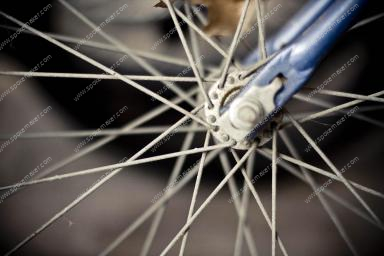Bike Spokes – An Important Part of Your Wheels
The spokes on your bike’s wheels are like the busboys at the restaurant. They’re quiet and out of the way, and it’s pretty much a thankless job. No one ever notices when everything is working well, but without proper set up and operation, all sorts of trouble will break lose.
What Spokes Do
The spokes on your bike may look like little more than metal toothpicks that fill space between the axle and wheel but really, these mighty little dudes have an important job. They do a couple of things:
- Add strength to your rim
- Transfer your leg power from the hub to the wheel
- Support your weight on the wheel
How Spokes Work
How the spokes accomplish these terrific and heroic feats? First, spokes don’t push outward, holding the rim at bay, like it might seem. Rather, the rim is evenly pulled inward by spokes that are laced through the hub, the center part of the wheel that rotates around the axle, which makes it extraordinarily strong. These spokes coming from the hub then radiate outward to the rim, where they attach to nipples, which are almost like little nuts resting in the rim.
The nipples can be screwed down onto threaded tips of the spokes, which increases tension on the rim, and also pulls it slightly to the left or right.
Another important job of spokes? Playing a key role in the transferring the power from your legs to the rim to make the bike go. Enormous force gets applied to the hub of a rear wheel by the chain and gearing when you pedal down hard, and together the spokes carry the power that has gone from your legs to the chain then out to the wheel. That force driving the bike forward gets distributed among many spokes in a properly aligned wheel, which people usually describe as being “in true.” When you look at weight distribution, too, even under a very heavy load many spokes help spread out the weight so that it is more evenly carried and doesn’t put too much stress on any single spoke.
Read More: Spokes Making Machine


